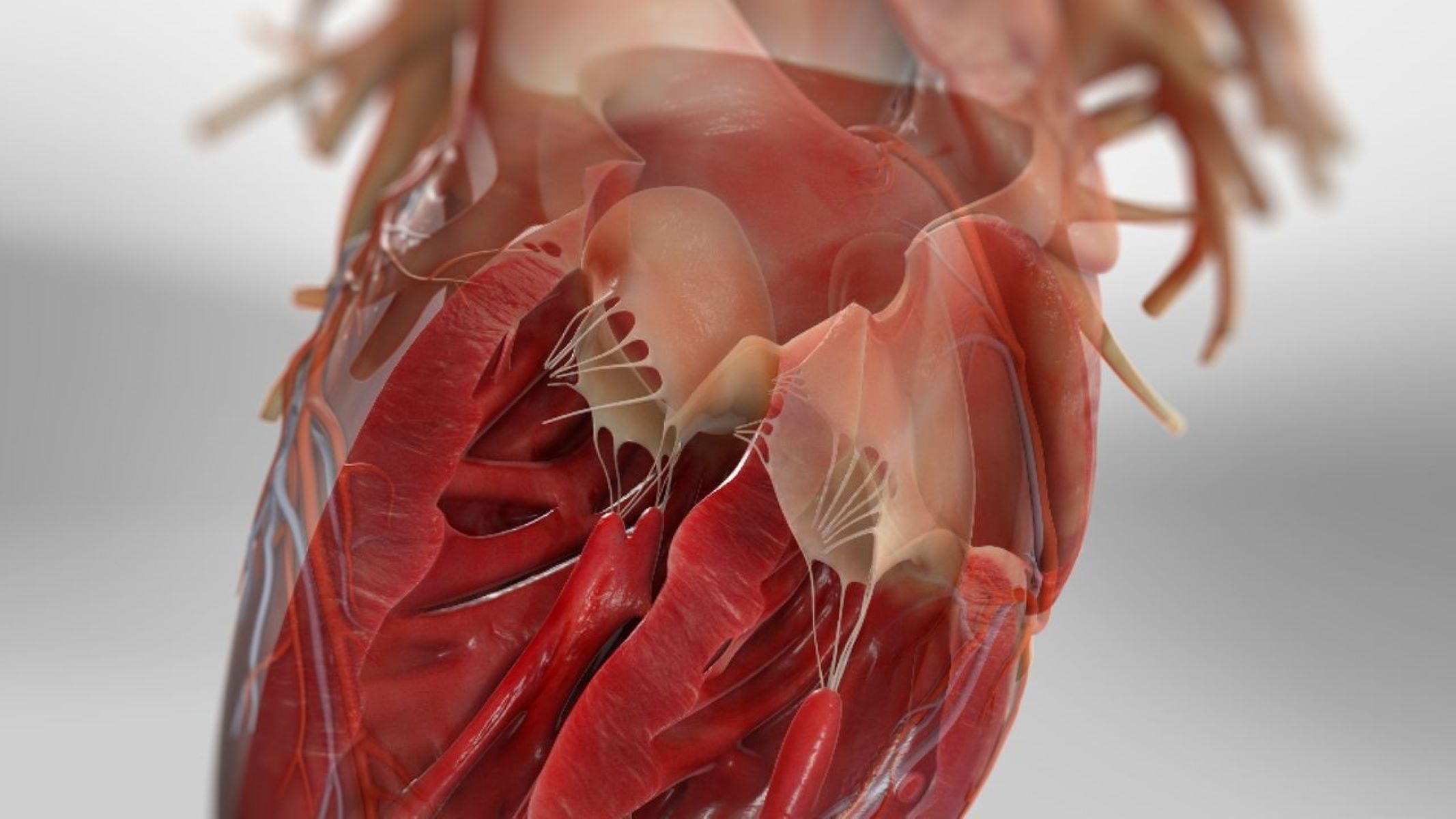
What is an Atrial Septal Defect (ASD)? An atrial septal defect (ASD) is a congenital heart defect where a hole exists in the septum, the wall separating the heart's upper chambers, or atria. This hole allows blood to flow between the left and right atria, which can lead to various symptoms and complications if untreated. ASD is one of the most common congenital heart defects, affecting about 25% of children. Symptoms can range from fatigue and shortness of breath to irregular heartbeats and swelling. Diagnosis often involves physical exams, echocardiograms, and ECGs. Treatment options include medication, surgical intervention, or percutaneous closure, depending on the defect's size and the patient's age.
What is Atrial Septal Defect (ASD)?
Atrial Septal Defect (ASD) is a congenital heart defect that affects the septum, the wall of tissue separating the heart's upper chambers, known as the atria. This defect allows blood to flow between the left and right atria, leading to various symptoms and complications if left untreated.
- Definition: An atrial septal defect is a hole in the septum between the left and right atria of the heart.
- Prevalence: ASD is one of the most common congenital heart defects, occurring in about 25% of children.
Types of Atrial Septal Defects
ASDs come in different types, each with unique characteristics and implications. Understanding these types helps in diagnosing and treating the condition effectively.
- Ostium Secundum: The most common type, where the hole is located in the center of the atrial septum.
- Ostium Primum: The second most common type, where the hole is near the lower end of the atrial septum and can be linked with mitral and tricuspid valve defects.
- Sinus Venosus: The least common type, where the hole is located in the upper part of the atrial septum and often linked with abnormal connections of the right pulmonary vein to the right atrium.
- Coronary Sinus: A rare type where part of the wall between the coronary sinus and the left atrium is missing.
Causes and Risk Factors
The exact cause of ASD remains unclear, but several factors can increase the risk of developing this condition.
- Causes: The exact cause of ASD is not clear, but it is believed to occur during fetal development.
- Risk Factors: Factors that may increase the risk include German measles (rubella) during pregnancy, diabetes, lupus, alcohol or tobacco use during pregnancy, and cocaine use.
Symptoms of ASD
Symptoms of ASD can vary depending on the size of the defect and the age of the individual. Recognizing these symptoms early can lead to timely treatment.
- Fatigue: Due to the increased workload on the heart.
- Shortness of Breath: Especially during physical activity.
- Irregular Heartbeats (Arrhythmias): Due to the abnormal flow of blood.
- Swelling: In the abdomen, legs, and feet due to fluid buildup.
- Heart Murmur: A whooshing sound heard through a stethoscope.
- Palpitations: A sensation of pounding, rapid, or skipped heartbeats.
Diagnosing ASD
Diagnosing ASD involves several tests and examinations to confirm the presence and severity of the defect.
- Physical Examination: Often the first step in diagnosing ASD.
- Electrocardiogram (ECG): Helps detect irregular heartbeats and other abnormalities.
- Chest X-ray: Can show an enlarged heart or other signs of heart failure.
- Echocardiogram: Provides detailed images of the heart and its chambers, crucial for diagnosing ASD.
Treatment Options
Treatment for ASD depends on the size of the defect and the individual's age. Options range from monitoring to surgical intervention.
- Small Defects: Often close spontaneously by the age of 3 years.
- Large Defects: May require surgical intervention to close the defect and prevent complications.
- Medical Therapy: Medicines like diuretics and antiarrhythmic medications can be prescribed to manage symptoms.
Surgical Techniques
Several surgical techniques are available to treat ASD, each with its own benefits and risks.
- Open-Heart Surgery: Traditional method where the surgeon directly closes the defect.
- Percutaneous Closure: Minimally invasive procedure where a catheter is used to close the defect with a device.
Complications of ASD
If left untreated, ASD can lead to serious complications that affect overall health and quality of life.
- Right-Sided Heart Failure: Due to increased workload on the right side of the heart.
- Irregular Heartbeats (Arrhythmias): Due to abnormal blood flow.
- Stroke: Increased risk due to blood clots forming in the heart.
- Pulmonary Hypertension: Increased pressure in the blood vessels of the lungs, which can lead to permanent lung damage (Eisenmenger syndrome).
ASD and Pregnancy
Females with ASD face higher risks during pregnancy, making proper prenatal care essential.
- Pregnancy Risks: Females with ASD are at higher risk for complications during pregnancy, including blood clot formation and high-risk pregnancy.
- Prenatal Care: Proper prenatal care is essential for managing these risks.
Genetic Factors and Screening
Genetic factors can play a role in the development of ASD, and early screening can help identify the risk.
- Genetic Factors: Some types of congenital heart defects, including ASD, can be inherited.
- Genetic Counseling: Can help identify the risk of heart defects in future children.
- Screening Programs: Early screening by a genetic counselor can help identify the risk of congenital heart defects, including ASD.
ASD in India
ASD prevalence and treatment options can vary by region. In India, the condition affects a significant number of infants.
- Prevalence in India: Around 10% of infants suffer from different types of atrial septal defects, with a prevalence of 26.4% for every 1000 patients, out of which 18.9% cases were ASD.
ASD in Adults
While ASDs are often diagnosed in childhood, they can persist into adulthood and require treatment.
- Types of ASD in Adults: The types of ASD in adults are the same as those in children.
- Symptoms in Adulthood: Symptoms of ASD may not appear until adulthood, especially if the defect is small and closes spontaneously. However, large defects can cause significant symptoms.
- Treatment in Adulthood: Treatment options for ASD in adults include surgical intervention and percutaneous closure, similar to those for children.
- Medical Therapy in Adults: Medical therapy for ASD in adults includes diuretics and antiarrhythmic medications to manage symptoms until surgical intervention is possible.
- Surgical Techniques in Adults: Surgical techniques for ASD in adults include open-heart surgery and percutaneous closure, with the choice depending on the individual’s health and the size of the defect.
- Complications in Adults: Large ASDs in adults can lead to serious complications, including right-sided heart failure, irregular heartbeats, stroke, and pulmonary hypertension.
- Pregnancy Risks in Adults: Females with ASD who become pregnant are at higher risk for complications, including blood clot formation and high-risk pregnancy. Proper prenatal care is essential.
Diagnostic Tools for ASD
Several diagnostic tools are essential for identifying and monitoring ASD.
- Echocardiogram Importance: An echocardiogram is crucial for diagnosing ASD and monitoring its progression. It provides detailed images of the heart and its chambers.
- ECG Importance: An electrocardiogram (ECG) is essential for diagnosing ASD by detecting irregular heartbeats and other abnormalities. It helps in monitoring the heart’s electrical activity.
- Chest X-Ray Importance: A chest X-ray is vital for diagnosing ASD by showing an enlarged heart or other signs of heart failure. It helps in assessing the overall condition of the heart.
- Heart Murmur Diagnosis: A heart murmur is a common diagnostic sign of ASD. It is heard through a stethoscope and indicates abnormal blood flow between the atria.
Treatment Outcomes
The outcomes of ASD treatment depend on various factors, including the size of the defect and the individual's age.
- Treatment Outcomes: Treatment outcomes for ASD depend on the size of the defect and the individual’s age. Small defects often close spontaneously, while large defects require surgical intervention. Percutaneous closure is also an option for some patients, offering minimally invasive treatment.
Understanding Atrial Septal Defect
Atrial Septal Defect (ASD) is a common congenital heart defect where a hole in the septum between the heart's atria allows blood to mix. This can lead to symptoms like fatigue, shortness of breath, and irregular heartbeats. Diagnosing ASD often involves physical exams, echocardiograms, and ECGs. Treatment varies from monitoring small defects to surgical interventions for larger ones. Untreated ASDs can cause complications such as right-sided heart failure, pulmonary hypertension, and increased stroke risk. Early diagnosis and intervention are crucial for better outcomes. Genetic factors can play a role, so genetic counseling might be beneficial. Understanding the types, symptoms, and treatment options helps manage ASD effectively, ensuring a healthier future for those affected.
Was this page helpful?
Our commitment to delivering trustworthy and engaging content is at the heart of what we do. Each fact on our site is contributed by real users like you, bringing a wealth of diverse insights and information. To ensure the highest standards of accuracy and reliability, our dedicated editors meticulously review each submission. This process guarantees that the facts we share are not only fascinating but also credible. Trust in our commitment to quality and authenticity as you explore and learn with us.


